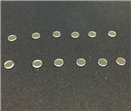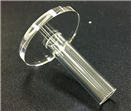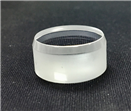

Time:2024-04-19
There is actually no difference in composition between industrial sapphire lenses and natural crystals. There is not much difference between synthetic sapphire and natural crystals. The main component of sapphire materials used in industry is aluminum oxide, which is composed of three oxygen atoms and two aluminum atoms covalently bonded together. The crystal structure is a hexagonal lattice with a hardness of Mohs 9. After the growth of sapphire glass columns, they are cut into glass screens with a thickness of less than one millimeter and supplied to mobile device production lines. However, there are also difficulties in the processing process, which will be introduced here.

1. Damage during processing
Sapphire still has good stability and wear resistance at high temperatures, and has been widely used in the fields of technology, national defense, and civil industry. It has a wide range of applications and also increases the demand for sapphire lens processing. Sapphire processing tools mainly use diamond tools, and the processing process is a high-speed grinding process. During the machining process, the tool itself wears out quickly and generates a large amount of heat. The powdered sapphire produced during the processing causes significant damage to the transmission mechanism of the machine tool. Due to the hard and brittle nature of sapphire itself, the surface of the workpiece is damaged. Easy to generate microcracks and form invisible damage layers, causing the workpiece to be scrapped.
2. Insufficient capability of related processing equipment
Sapphire (corundum) has good transparency, thermal conductivity, and electrical insulation, as well as excellent mechanical properties, wear resistance, and corrosion resistance. Sapphire has a melting point of 2050 degrees Celsius, a boiling point of 3500C, and a working temperature of up to 1900C. In recent years, with the rapid development of crystal growth methods and equipment, there has been an urgent need for large-scale processing due to the insufficient processing capacity of related equipment.
3. There are hard particles in the coolant
The powdered sapphire particles generated during processing mixed into the coolant can cause significant damage to the transmission components of the machine tool and the coolant circulation pump, especially for machines with spindle center water outlets. This will cause wear on the coolant gear pump and low center outlet water pressure. The processing mainly involves grinding, resulting in very small sapphire particles that are difficult to completely filter out using traditional filtration methods.
The above are the difficulties in processing sapphire lenses. Sapphire has a high hardness and is relatively brittle, so it is prone to edge chipping and edge breakage during the processing. Special carving machines are usually used to process glass parts, which can effectively reduce costs and achieve high-precision processing.






Tel
Mobile phone
Customer service
TOP